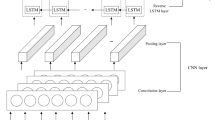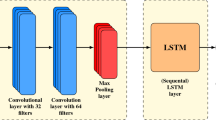Abstract
As an essential task in the machine learning community, multivariate time series forecasting has many real-world applications, such as PM2.5 forecasting, electricity price forecasting, and traffic flow forecasting. In multivariate time series data, one feature is chosen as the target feature and the other is seen as auxiliary information. These features have very complex spatial dependencies, and most of the existing models put all features together for spatial feature extraction, which is an undifferentiated feature extraction process. It can not distinguish the importance of different features to the target feature. Thus, the spatial feature extraction of data is insufficient. To solve the problems mentioned above, based on the Gated Recurrent Neural Network, we design a new architecture named Auxiliary Information-GRU (AI-GRU) to extract deep temporal and spatial features and combined it into Auxiliary Information-deep Transition Network (Al-DTN). AI-GRU added three gating units, auxiliary information gate controls the amount of auxiliary information flowing into AI-DTN, fusion information gate controls the degree of fusion of target feature and auxiliary information, linear transformation gate isolates the target features from the auxiliary information. Experimental results show that our proposed model outperforms the representative baseline models on the two benchmark datasets.










Similar content being viewed by others
Data Availability
The data and materials are available.
Code availability
The codes are also available if reviewers need it.
References
Karevan Z, Suykens JA (2020) Transductive lstm for time-series prediction: an application to weather forecasting. Neural Netw 125:1–9
Mahajan S, Chen L-J, Tsai T-C (2017) An empirical study of pm2. 5 forecasting using neural network. In: 2017 IEEE SmartWorld, Ubiquitous Intelligence & Computing, Advanced & Trusted Computed, Scalable Computing & Communications, Cloud & Big Data Computing, Internet of People and Smart City Innovation (SmartWorld/SCALCOM/UIC/ATC/CBDCom/IOP/SCI), pp 1–7. IEEE
Jakasǎ T, Androceč I, Sprcić̌ P (2011) Electricity price forecasting—arima model approach. In: 2011 8th international conference on the European energy market (EEM), pp 222–225. IEEE
Chang Y-Y, Sun F-Y, Wu Y-H, Lin S-D (2018) A memory-network based solution for multivariate time-series forecasting. arXiv:1809.02105
Box GE, Pierce DA (1970) Distribution of residual autocorrelations in autoregressive-integrated moving average time series models. J Am Stat Assoc 65(332):1509–1526
Voyant C, Nivet ML, Paoli C, Muselli M, Notton G (2015) Meteorological time series forecasting based on mlp modelling using heterogeneous transfer functions. In: Journal of Physics: Conference Series, vol 574, p 012064. IOP Publishing
Zhang GP (2003) Time series forecasting using a hybrid ARIMA and neural network model. Neurocomputing 50:159–175
Lütkepohl H (2005) New introduction to multiple time series analysis
Roberts S, Osborne M, Ebden M, Reece S, Gibson N, Aigrain S (2013) Gaussian processes for time-series modelling. Phil Trans R Soc A: Math Phys Eng Sci 371(1984):20110550
Frigola R (2015) Bayesian time series learning with gaussian processes. PhD thesis, University of Cambridge
Connor JT, Atlas LE, Martin RD (1991) Recurrent networks and NARMA modeling. In: Moody JE, Hanson SJ, lippmann R (eds) Advances in neural information processing systems 4, [NIPS Conference, Denver, Colorado, USA, December 2-5, 1991], pp 301–308
Hochreiter S, Schmidhuber J (1997) Long short-term memory. Neural Comput 9(8):1735–1780
Chung J, Gülçehre Ç, Cho K, Bengio Y (2014) Empirical evaluation of gated recurrent neural networks on sequence modeling. arXiv:1412.3555
Lai G, Chang W-C, Yang Y, Liu H (2018) Modeling long-and short-term temporal patterns with deep neural networks. In: The 41st international ACM SIGIR conference on research & development in information retrieval, pp 95–104
Assaf R, Giurgiu I, Bagehorn F, Schumann A (2019) Mtex-cnn: multivariate time series explanations for predictions with convolutional neural networks. In: 2019 IEEE international conference on data mining (ICDM), pp 952–957. IEEE
Lai G, Chang W-C, Yang Y, Liu H (2018) Modeling long-and short-term temporal patterns with deep neural networks. In: The 41st international ACM SIGIR conference on research & development in information retrieval, pp 95–104
Wen C, Liu S, Yao X, Peng L, Li X, Hu Y, Chi T (2019) A novel spatiotemporal convolutional long short-term neural network for air pollution prediction. Sci Total Environ 654:1091–1099
Qin Y, Song D, Chen H, Cheng W, Jiang G, Cottrell G (2017) A dual-stage attention-based recurrent neural network for time series prediction. arXiv:1704.02971
Yin C, Dai Q (2022) A deep multivariate time series multistep forecasting network. Appl Intell 52(8):8956–8974
Box GE, Jenkins GM, Reinsel GC, Ljung GM (2015) Time series analysis: Forecasting and Control
Geetha A, Nasira GM (2016) Time-series modelling and forecasting: modelling of rainfall prediction using arima model. Int J Soc Syst Sci 8(4):361–372
Vapnik V, Golowich S, Smola A (1996) Support Vector method for function approximation, regression estimation and signal processing. Adv Neural Inf Process Syst, 9
Yang H, Huang K, King I, Lyu MR (2009) Localized support vector regression for time series prediction. Neurocomputing 72(10-12):2659–2669
Ong BT, Sugiura K, Zettsu K (2016) Dynamically pre-trained deep recurrent neural networks using environmental monitoring data for predicting pm2. 5. Neural Comput & Applic 27(6):1553–1566
Liu F, Cai M, Wang L, Lu Y (2019) An ensemble model based on adaptive noise reducer and over-fitting prevention lstm for multivariate time series forecasting. IEEE Access 7:26102– 26115
Liu X, Liu Q, Zou Y, Wang G (2018) A self-organizing lstm-based approach to pm2. 5 forecast. In: International conference on cloud computing and security, pp 683–693. Springer
Chung J, Gulcehre C, Cho K, Bengio Y (2014) Empirical evaluation of gated recurrent neural networks on sequence modeling. arXiv:1412.3555
Tan Q, Ye M, Yang B, Liu S, Ma AJ, Yip TC-F, Wong GL-H, Yuen P (2020) Data-gru: Dual-attention time-aware gated recurrent unit for irregular multivariate time series. In: Proceedings of the AAAI conference on artificial intelligence, vol 34, pp 930– 937
Huang G, Li X, Zhang B, Ren J (2021) Pm2. 5 concentration forecasting at surface monitoring sites using gru neural network based on empirical mode decomposition, vol 768
Shih S, Sun F, Lee H (2019) Temporal pattern attention for multivariate time series forecasting. Mach. Learn 108(8-9):1421–1441
He H, Zhang Q, Bai S, Yi K, Niu Z (2022) Catn: cross attentive tree-aware network for multivariate time series forecasting
Liu Y, Gong C, Yang L, Chen Y (2020) DSTP-RNN: a dual-stage two-phase attention-based recurrent neural network for long-term and multivariate time series prediction. Expert Syst Appl. 143
Liang Y, Meng F, Zhang J, Xu J, Chen Y, Zhou J (2019) A novel aspect-guided deep transition model for aspect based sentiment analysis. In: Proceedings of the 2019 conference on empirical methods in natural language processing and the 9th international joint conference on natural language processing, EMNLP-IJCNLP 2019, Hong Kong, China, November 3-7, 2019, pp 5568–5579
Chang Y, Sun F, Wu Y, Lin S (2018) A memory-network based solution for multivariate time-series forecasting. arXiv:1809.02105
Funding
This work was partially supported by the National Natural Science Foundation of China (NSFC) [No.61876071] and Scientific and Technological Developing Scheme of Jilin Province [No.20180201003SF, No.20190701031GH] and Energy Administration of Jilin Province [No.3D516L921421].
Author information
Authors and Affiliations
Contributions
All authors contributed to the study conception and design. Material preparation, data collection and analysis are performed by Yiming Wang. All authors read and approved the final manuscript.
Corresponding author
Ethics declarations
Ethics Approval
This research does not involvehuman participants nor animals.
Consent to participate
Consent to submit this manuscript has been received tacitly from the author’s institution, Jilin University.
Consent for Publication
All authors are consent for publication.
Competing interests
The authors have no conflict of interest.
Additional information
Publisher’s note
Springer Nature remains neutral with regard to jurisdictional claims in published maps and institutional affiliations.
Rights and permissions
Springer Nature or its licensor (e.g. a society or other partner) holds exclusive rights to this article under a publishing agreement with the author(s) or other rightsholder(s); author self-archiving of the accepted manuscript version of this article is solely governed by the terms of such publishing agreement and applicable law.
About this article
Cite this article
Wang, Y., Feng, S., Wang, B. et al. Deep transition network with gating mechanism for multivariate time series forecasting. Appl Intell 53, 24346–24359 (2023). https://doi.org/10.1007/s10489-023-04503-w
Accepted:
Published:
Issue Date:
DOI: https://doi.org/10.1007/s10489-023-04503-w




